#intermarium
Photo
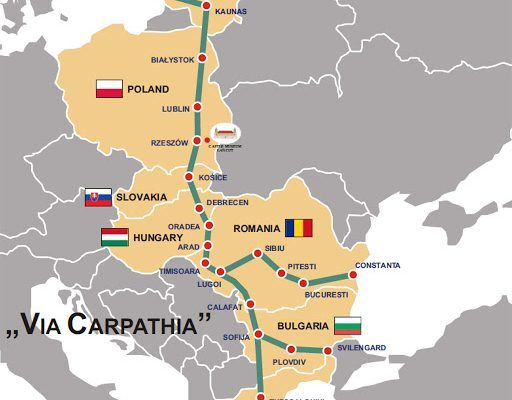
Intermarium, a Polish idea to isolate and deter Russia, finally becomes a functional idea, the war speeds things up. Rail2Sea project will be finished by 2029. Ukraine will surely join after the war(..). Source: PaulC
P.S. Very good project! This is necessary primarily to promote transport connections and economic and military cooperation between Eastern European countries so that our region does not once again become a hostage to the deals concluded by "useful fools" behind the backs of Eastern Europeans! The cooperation among the Eastern European countries must include the component of building a local MILITARY INDUSTRY, so that our security protection no longer depends on the whims of corrupt Western politicians, such as Trump...
#intermarium#eastern europe#economic cooperation#railway#defense of freedom#defense of liberty#defense of europe#Allies
5 notes
·
View notes
Text
Turkul, in realtà, fu sempre un agente della GRU sovietica
Turkul, in realtà, fu sempre un agente della GRU sovietica
L’Intermarium reclamava il bisogno di una potente Confederazione Anticomunista Pandanubiana, composta per la gran parte dalle Nazioni cattoliche dell’Europa Centrale. In sintesi, lo scopo dell’Intermarium era quello di formare un cordone sanitario per fronteggiare l’avanzata russa.Molti documenti provenienti da fonti accreditate, provano che il Vaticano aveva appoggiato tali operazioni che come,…
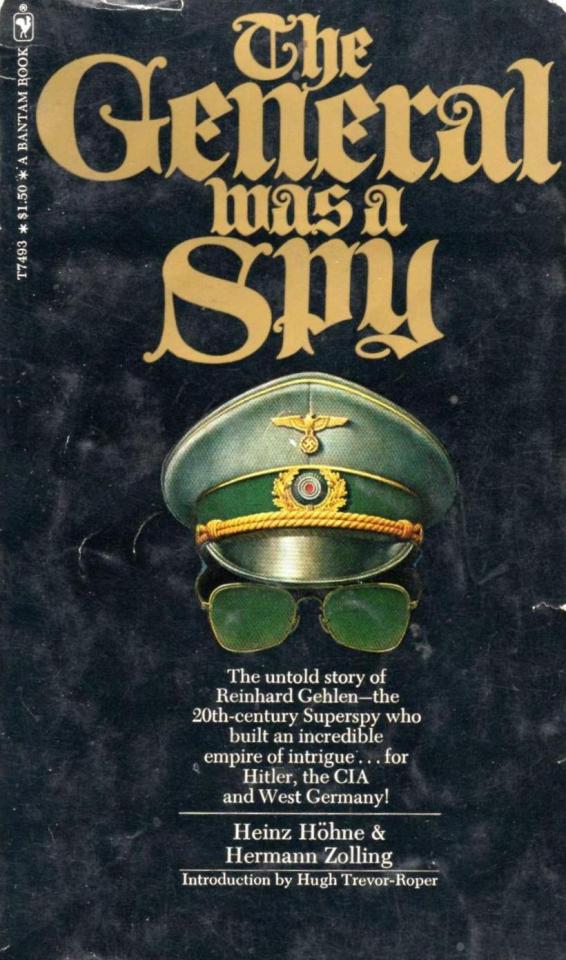
View On WordPress
#1917#1934#1938#1941#1943#1945#Abwehr#Anton Vasilevič Turkul#croazia#Feliks Edmundovič Dzeržinskij#GRU#Intermarium#Luca Mershed#NTS#Odessa#operazione#Organizzazione#Schwarze Kapelle#segreti#servizi#Stati Uniti#Ucraina#Unione Sovietica#Vaticano#Wilhelm Canaris#Čeka
2 notes
·
View notes
Link
The bloodlands
#Churchill#Alan Dulles#Kalergi#Ukraine#Poland#Austria#Hungary#Baltic#Intermarium#cold war#MI6#Nazi#ratlines#stay behinds#Gladio
0 notes
Text
Polonia, pe cale să realizeze unul din proiectele ei geopolitice. Urmează Intermarium, cu includerea României în ”imperiul polonez”?

View On WordPress
0 notes
Text
Die Geopolitik der russisch-sowjetischen Reparationen an Polen
Die Geopolitik der russisch-sowjetischen Reparationen an Polen
Nicht nur von Deutschland verlangt Polen Reparationen, sondern auch von Russland.
Von Andrew Korybko
Die Frage der russisch-sowjetischen Reparationen an Polen wird viel mehr von Warschaus großartigen strategischen Entwürfen zur Wiederbelebung seiner lange verlorenen Rolle als Großmacht vorangetrieben als von der historischen Gerechtigkeit, von der es behauptet, dass sie hinter dieser Sache…

View On WordPress
1 note
·
View note
Text

This is my current ck2 game btw, I'm big lithuania
4 notes
·
View notes
Text
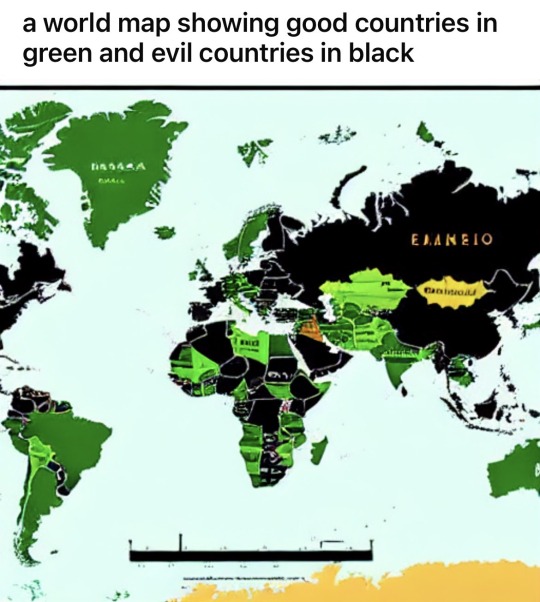
19 notes
·
View notes
Note
Where exactly do you stand on the Ukraine issue because I keep getting mixed messages from your blog.
no, i've been consistent on this from the beginning.
i don't care.
i see both sides and i sympathize with both sides. however, i don't think america should be involved. let them fight it out or negotiate or whatever. unless the world wants to formally recognize america's hegemony, and they offer us tribute or something, i really don't feel an obligation to protect any country that we don't have a treaty with or any interest in.
#instead of nato expanding eastward#all those quote unquote westernized central/eastern european states#should have created their own pact#create the intermarium for real#so those states will have some security against russia#and there will be a buffer state(s) between nato and russia#though i still maintain the best option is to reconcile with russia#and incorporate them into europe as well
8 notes
·
View notes
Note
What do you imagine the world would be like if Russia and the US were Allies rather than bitter rivals?
That really depends on the context and shape of the alliance.
For example, Russia would have loved it if the US said "we don't care about Eastern Europe, go hog-wild over there." In that case, you'd see a far more dangerous Eastern Europe with far more conflicts of varying intensity. Eastern Europe would likely form an intermarium alliance which would have likely escalated into a fully-fledged war.
Alternatively, if Russia had fully embraced liberal democracy after the fall of the Soviet Union, you probably would have seen domestic discontent in Russia's own borders, with separatist movements and violent extremists hoping to take advantage of the weakened government.
Thanks for the question, Anon.
SomethingLikeALawyer, Hand of the King
9 notes
·
View notes
Text
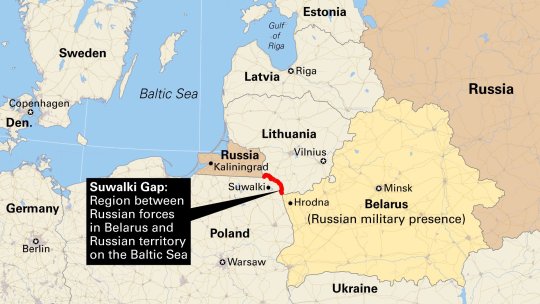
Poland, Lithuania and Latvia have developed a joint Belarus blockade system - if any of these countries decide to do so, all 3 countries will implement an immediate border blockade. August, 6, 2023. Source: Intermarium 24
P.S. In essence, such a decision is the core of the formation of a collective regional security system, in which Poland will be at the centre. Ukraine's difficulties in obtaining modern armaments show that the Baltic and Eastern European countries themselves need to build their own collective security alliance and their own military industry, which would be independent of the West's political games and backroom deals with the Kremlin.
The effectiveness of NATO and the security of Eastern Europe are particularly threatened by Trump and his entire gang of supporters...
#Poland#Lithuania#Latvia#russian threat#russian invasion#defense of freedom#Baltic States#NATO#russian blackmail
18 notes
·
View notes
Text
We need a Intermarium from the Baltic Sea down to the Black Sea
2 notes
·
View notes
Text
According to Oleksiy Kuzmenko, “The advance of the Intermarium is seen by Azov as an integral part of the long-term strategy of Reconquista, which is meant to bring together nations of European origin globally under the [white supremacist] banner of reclaiming land and culture.” Reconquista is the name of Azov’s broader geopolitical project, also coordinated by Olena Semenyaka, “to create our own Right International,” as she described it, and “defend the white race.”
3 notes
·
View notes
Text
Ea: Our Second Chance (4)
4. Earth, 2070
(> Back to 3. South of the Dagon Sea
> On to 5. Ea’s biosophere, two centuries later)

(full-sized image)
The world the 10,000 representatives of humankind left when they came to Ea. [Note for context: this map was drawn before the COVID pandemic, the US withdrawal from Afghanistan, and the invasion of Ukraine, and therefore takes none of those into account.]
THE 2020s: THE NILE WAR AND ITS AFTERMATH
In the "Culture War" flares of the 2010s and early 2020s, the extreme political blocs branch off on their own; by the end of the decade all that's left of the major parties are the bland centrist bureaucrats, as well as a multitude of unelectable hyperspecialized parties. American economy and politics is increasingly isolationist: many overseas military bases are dismantled; the UN establishes a secondary headquarter in Geneva, which soon becomes more important than the one in New York.
Ethiopia begins building an extensive dam system on the upper Nile. Negotiations with the downstream countries break down; eventually, the dams are bombed by the Egyptian air force. War spreads to all northeastern Africa, with significant interventions of Nigeria (on the Ethiopian side) and Saudi Arabia (on the Egyptian side). The whole region is devastated by the Nile War; in particular, Ethiopia collapses, and riots in Saudi Arabia threaten the monarchy.
In the aftermath of the Nile War, military government are propped up by the African Union to keep order in the devastated countries. The peacekeeping forces are largely provided by the countries of the East African Community. A mysterious man known as Muntu tours the archaeological sites of Africa preaching a religion founded on the common origin and nature of humankind. He is claimed to perform miraculous healing and to supernaturally escape death, converting his attackers to the new faith.
Poland and Ukraine form an alliance ("Intermarium") against the aggressive policies of Russia in the east. The alliance is soon extended to many other countries of eastern Europe.
Sea level rise and saltwater infiltration start making the soil of Bangladesh impossible to farm, and many regions will soon sink. Tens of millions of Bengali people scatter in the world. Europe, North America, and East Asia are hit by a refugee crisis far worse than a decade before. Agriculture also suffers worldwide; billions are spent to protect cities such as Miami, Rotterdam, and Venice from flooding. Sumatra, South Vietnam, and Louisiana suffer greatly.
By the end of the decade, permanent ice has all but disappeared in the Arctic, and the Indonesian rainforest is mostly gone. Space programs keep growing quietly, with manned missions by India, Brazil, South Africa, and South Korea. Genetic therapies are available for several diseases, including AIDS.
THE 2030s: BREAKING STRAIN
Warming in the Russian Far East exposes large traits of mining and farming ground. Since the Russian population is declining, the government provide incentives for foreigners to work that land. Millions of Chinese workers, fleeing the desertification of northeastern China, establish themselves there.
After many years of increasing economical and cultural integration, the countries of Kenya, Tanzania, Uganda, Rwanda, and Burundi join to form the East African Federation. Much wealth is brought in by the construction of an international space launch site on the Equator. The religion founded by Muntu, Umoja, is growing in popularity, though the Prophet is eventually killed in a terror attack in Geneva in 2034, along with 77 others.
The demographic shifts compounded by the Bengali Diaspora put strain on European politics. The United Kingdom withdraws from the continent altogether, threatening nuclear retaliation against any "breach of sovereignty". It offers to extend such protection to Ireland in exchange for its farming land. Japan and Australia do the same, although the latter is much less successful.
As oil becomes increasingly expensive to extract, and its use is phased out of most technology, many oil-exporting nations collapse. Saudi Arabia crumbles into anarchy, and will be put under "temporary" UN administration. Nigeria falls apart. A socialist revolution sweeps Iran destroying the islamic government. Dubai survives, reinventing itself as a new center of electronics and computer engineering.
In these years, the idea of the Exodus starts to spread. The first manned mission to Mars occurs, as well as many unmanned ones to the Outer Solar System, though there is little practical followup. A Suzhou corporation called Penglai is the greatest private backer of the missions (and many other growing technologies, including cryonics and geoengineering). A military coup in North Korea effectively places the country under Chinese control.
THE 2040s: GLOBAL REARRANGEMENTS
The European Union gives way. The "core" territories restructure themselves as the much tighter European Federation, while the southern countries create the Mediterranean Forum with Turkey and North Africa. Italy and Spain find themselves torn - quite literally - between the two. Umoja becomes popular in the Forum, while Catholic traditionalism sees a certain increase in popularity in the Federation.
Fed by Indian and Chinese investments, certain African countries undergo extreme economic grow and industrialization, developing into key financial and technological centers. Senegambia, Eswatini, Igboland, and Somaliland become the "African Lions". Dubai is sometimes counted as one due to its close economic and diplomatic ties.
Many island nations of the Pacific, such as Palau and Kiribati, start disappearing under the waves. After much political browbeating and bribing, the UN establishes a Pacific People Resettlement Area in the Australian inland, in a region already crowded by Bengali refugees. Umoja grows here as well. Inspired by the tragedy, a great movement for the protection of native peoples threatened by climate change sweeps the world, with particular appeal in Canada, Siberia, Sahel, and the Amazon.
The military junta ruling Pakistan after the recent coup attacks the troubled Iranian regime in the attempt to unite an increasingly fractured country. The war is brief, but it sees several biological and tactical nuclear attacks, eventually ending in the breakdown of Pakistan. International action pushes for a tighter control of WMD by the UN to prevent future horrors as those of the Iran-Pakistani War.
As traditional Protestantism fades away from US culture, Mormonism grows in popularity as the "true" American religion. Worsening droughts in the Southwest and hurricanes on the East Coast lead to repeated emergency states with rationing of water and electricity. History's first large-scale biological terror attack, involving a modified strand of anthrax, occurs in San Francisco in 2046; the perpetrators remain unknown, but are suspected to be a radical eco-primitivist organization.
Liu Jinshan, CEO and cofounder of Penglai, is the first person in history to own more than a trillion US dollars in private assets. The strongest proponents of interstellar colonization are Liu herself and Joseph Jacobson, a prominent Mormon preacher. The first AIs with greater computational power than the human brain are produced, though none seeks to simulate a complete mind. A woman with brain cancer is awakened from 6 years of cryoconservation to undergo an experimental treatment; the former is successful, the latter not as much. Embryo selection is widespread, and "designed children" with fully customizable genome are slowly becoming available.
THE 2050s: THE DECADE OF COLLAPSE
Russian national energy companies are violently expelled from the warming regions in the east. Chinese and Bengali immigrates ally with movements for native rights in agitating for independence. After a brief civil war, the Siberian Republics break away from Russia. Their staunch opposition to global warming mitigation quickly makes them rogue nations. The government of the Lena Republic, in particular, is accused of deliberately setting peatbogs on fire to release carbon into the atmosphere.
As many times before, the wealth of coastal Chinese provinces fails to extend inland. After failed expeditions to secure Siberian territory, China falls apart. The mainland reorganizes itself by Neo-Maoist principles, while the coastal Eastern Republic (actually a rather loose confederation of provinces) embraces free market and multiparty democracy. Tibet and Uyghurstan break away, though the former remains in China's political orbit. The surprisingly bloodless (for Chinese standards) conflict ends with the Shenzhen Pact recognizing autonomy but keeping economic ties between the Chinese states, as well as other countries.
The Four Europes have taken form. In the north, Scotland and the Scandinavian countries are united in the Nordic Alliance. In the south, European and North African countries grow culturally and politically closer in the chaotic Mediterranean Forum. In the east, the well-armed confederation of Intermarium turns its wariness westward. In the west, the European Federation starts thinking about enlightened monarchy as a counterweight to nationalist populism; some press for the progressive Grand Duke of Luxembourg to ascend to the throne of Europe.
Most of North Africa has collapsed into war. Thanks to progresses in solar energy production and transmission, burning desert is now a precious resource. The Mediterranean Forum enthusiastically intervenes; many Berber tribes earn a living as mercenary armies attacking or protecting the solar stations, and sometimes carve out their own independent kingdoms. The situation in Saudi Arabia is hardly better; since the 2030s, the Holy Cities have changed hands dozens of times.
Despite the 2050s being the most violent decade of the 21st century, world population passes ten billion people in 2057. By this time, Umoja counts over 50 million believers. Methane clathrates in former Russia begin outgassing. The UN passes a resolution on geoengineering: special "guns" are built in the Russian and Canadian Arctic to inject sulfate particles in the upper atmosphere. The first functional nuclear fusion reactor is built in Europe in 2055.
THE 2060s: BUILDING A NEW WORLD
Revolutionary groups in Nunavut, whose population has vastly grown from climate-induced poleward migrations, seize control of the sulfate guns and declare independence from Canada. As of 2070, the political situation is still ambiguous.
Decades of centralization of powers in the person of the US President, combined with the constant emergency state, have resulted in an almost imperial position. President D'Agostino eventually decides to split the USA in five "autonomous areas" according to rough ethnic and cultural lines: Northwest/Pacific (technocratic, ecologically conscious, and strongly influenced by Asia), Southwest/Nortena (mostly Hispanic, profiting from solar energy), Central/Heartland (mostly white and Mormon), Southeast/Atlantic (mostly black and Umojan), and Northeast/Union (the seat of power, the most culturally conservative).
UN Protectorates become a common feature of the international order. The warzone in North Africa has been pacified as the so-called "Solar Mandate" (providing most of the energy of Europe). Other directly UN-controlled areas include former Saudi Arabia, Jammu-Kashmir, parts of Nigeria and Somalia, what little remains of Bangladesh, and the Resettlement Area in Australia. Amazonas, created to protect the surviving rainforest in western Brazil, is mostly autonomous; the "Security Mandate" in northeast Africa (essentially the wrecks of the Nile War) is controlled indirectly via the African Union.
Construction of the UNSS Utnapishtim begins in geostationary orbit in 2062. By 2068, construction is complete; loading and recruitment are underway. Methane eruptions increase in intensity, threatening a sudden increase in global temperature by several degrees. The rise of Umoja threatens many traditional religions; climate migrations create sharp divisions in many countries; the world is divided between unstable alliances; the new United Nations may pit themselves against the very concept of sovereign nation-states; a generation of "designed children" is coming of age, creating new rifts and revealing unforeseen effects; mass destruction is easier than ever. Earth is once again on the brink.
Transcript of the map under the cut:
List of major polities (population; capital)
THE FOUR EUROPES
European Federation (260 million; Bruxelles)
Nordic Alliance (35 million; Trondheim)
Intermarium (110 million; Katowice)
Mediterranean Forum (360 million; Valletta)
EX UNO PLURA
Northwest (“Pacific States”) (40 million; Portland)
Southwest (“Nortena Republic”) (60 million; San Diego)
Central (“Heartland States”) (120 million; Denver)
Northeast (“Union States”) (80 million; Washington DC)
Southeast (“Atlantic States”) (100 million; Atlanta)
THE NEW AFRICA
East African Federation (240 million; Arusha)
The “African Lions” (130 million total; Enugu is capital of Igboland)
Sahel Alliance (170 million; Bamako)
ISLAND NATIONS
Anglo-Irish Commonwealth (70 million; London and Dublin are “joint capitals”)
Japan (120 million; Tokyo)
Australia (35 million; Canberra)
People’s Republic of Iran (110 million; Mardombad)
Israel (15 million; Jerusalem)
STRONGER TOGETHER
Shenzhen Pact (1700 million total, of which 1100 in People’s Republic of China, 470 in Eastern Republic; Shenzhen, while the capitals of PRC and ER are Beijing and Guangzhou)
Southeast Asian Alliance (730 million total; Singapore)
Mesoamerican Treaty (75 million total; San Jose)
Union of Siberian Republics (18 million total; Yakutsk)
West Indies Federation (55 million total; Kingston)
FOR THE COMMON GOOD
UN Protectorates (180 million total; Geneva)
African Union Security Mandate (120 million total; Khartoum)
Amazonas (6 million; Manaus)
Control over the sulfur guns that reflect back sunlight gave the population of Nunavut, magnified by northward migration, enough power to negotiate independence from Canada.
The Pacific States are big on environmentalism: sometimes it’s hard ecological pragmatism, sometimes it’s pseudo-Shinto mysticism.
As the Latter Day Saints church keeps growing in popularity, Salt Lake City is one the most popular pilgrimage destinations in the world.
In the black-majority Atlantic States, Umoja has become astonishingly popular. Many Protestant churches are radicalizing in response, blaming the flood of New Orleans on the conversion.
The central government of Mexico has mostly given up on ruling the north, effectively employing the least murderous cartels as autonomous vassals. Some states have sought union with the kindred Nortena Republic.
The West Indies seem to have been the favorite destination of the Bengali Diaspora, which now makes up over 25% of the population.
The orbital mirror meant to deflect sunlight from the North Pole was launched from European Guyana, with great pride of the local population.
An ecologist uprising in the 2040s, combined with a forceful campaign for the rights of native peoples, convinced Brazil to turn Amazonas into a largely independent, well-armed quasi-nation under international scrutiny.
South Africa has been stagnating for half a centuty: almost all its bright minds have moved to Eswatini.
Katanga is hotly contested between various ethnonationalist groups, Umojan militias, UN peacekeepers, and corporate forces (mostly Penglai’s).
The Umojan religion has become an overwhelming majority in the East African Federation, and is growing at surprising speed in the Mediterranean countries, India, Caribbeans, and Malaysia.
Senegambia (a), Igboland (b), Eswatini (c), and Somaliland (d) are some of the fastest-growing economies in the world. Igboland is sometimes called “the Singapore of Africa” for its combination of authoritarian government and very high living standards.
Ethiopia suffered terribly from the Nile War, and assimilation in the EAF may be its best bet. The Security Mandate in the west still hasn’t got things running again.
The Sahel Alliance is mostly controlled by Tuareg warlords displaced by the end of hostilities in the Sahara, or by people who employ them. It includes strict Islamic theocracies, tribal states, and militaristic “republics”.
Most of Sahara is under direct UN administration, ostensibly to ensure the safety of the nomad cultures, more likely to control its juicy solar energy.
The Mediterranean Forum is scared as hell of ecoterrorism ever since someone barely failed to bomb the Assuan Dam, and is reacting accordingly. (The Dutch are not thrilled by the thought of destroyed dams, either.)
The royal families of Spain and Netherlands now mostly spend their time hanging out together at the Canaries, feeling useless.
Catalunya is by far the wealthiest member of the Mediterranean Forum, which is sometimes accused of being a joint Turkish-Catalan empire.
The UN, now headquartered in Geneva, is very different from what it used to be in the American Age. For one, it can actually enforce its rulings. An actual standing army and special exemptions from the rules of war might have something to do with that.
The European Federation’s attitude toward its southern neighbor is an interesting mix of 2010s left-wing social justice and 1890s white-man’s-burden condescension.
After withdrawing from the continent, the UK gained access to the agricultural production of Ireland by sharing its own nuclear shield. Culture and politics are still sharply divided between the two islands.
The Intermarium was originally organized to counter Russian expansionism; now it spends most of its time eyeing suspiciously the European Federation to the west.
With Gaza a member of the Forum, the West Bank absorbed into Jordan, and most of the Arab world looking elsewhere, Israel is calmer than it has ever been. Now it mostly thinks of agricultural technology and electronics.
The formation of Kurdistan is anther consequence of the wars that spread from the Iranian Second Revolution in the 2030s.
Now that the Saudi royal family is gone, UN-controlled Arabia is still more relaxed about adherence to sharia, though the Holy Cities are still administered by a Sunni-only council.
The absolute-monarchical nature of Dubai was only amplified by turning to information technology and on-demand designer genomes: now it’s a weird solar-powered, neo-feudal cyberobiopunk dys(?)topia.
After decades of grueling UN-mediated negotiation with tribal leaders and the surrounding nations, the nation of Afghanistan is a distant memory, though Hazaristan and Pashtunistan are not faring much better.
The whole territory of Bangladesh had to be placed under UN aegis when the flooding was at its worst. Most of the country as it was in the 2000s is now under water.
India has dealt successfully with separatist movements in Assam and Tamil Nadu, skirmishes with Nepal, Baluchistan, and Punjab, and of course a hundred million refugees from Bangladesh. Apart from having to renounce control of Jammu-Kashmir, it’s arguably better off than any other early-century power.
After the collapse of China, Tibet (a) and the Amur Republic (b) were so completely sinified that they agreed to join the Shenzhen Pact...
... while Uyghurstan wanted to have absolutely nothing to do with it.
The People’s Republic still runs on the old,and now self-sustaining, system of “social credit”. Most population has been relocated into equally populated sectors for greater ease of control. The system works better than it ough tto thanks to the funds streaming in from the Eastern Republic.
Despite being officially Siberian native homelands, the population here is mostly Bengali and Chinese. The Sakha Republic has one of the highest per capita GDP in the world - but averages can be deceptive.
Japan’s enthusiasm for robotics is still going, but in recent years they have started to turn toward genetic engineering. As it’s once again “closed country”, the rest of the world doesn’t hear much about it...
... so Korea has mostly replaced Japan as the land of Eastern wonders and weirdness in global imagination.
The greater effects of flooding on Sumatra than on Java has set off rather nasty rivalries within Indonesia, though for now the Southeast Asian Alliance has helped keep the peace.
The Pacific People Resettlement Area was established in the Australian inland to host the refugees from the flooded Pacific islands. Conditions are quite miserable.
About 6000 Argentinian citizens live on the Antarctic Peninsula as a de facto colony. The legal status of Sierra Blanca is... complicated, to say the least.
The flight south wasn’t quite as extensive as the one north, but Argentina received a decent share of climate-driven immigration.
The division of Italy was actually quite amicable; it’s said that the governments in Rome and Turin secretly work with each other to extract as much gain as possible from both the EF and the MF.
The Mayan-majority state of Chiapas was one of the main hotspots of the movement for native autonomy. Until recently seeking union with Guatemala, it’s now pushing for a EU-style Mesoamerican community.
#future history#worldbuilding#my work#ea our second chance#longpost#please don't take it too seriously#fwiw this is not meant as a straight dystopia NOR utopia
5 notes
·
View notes
Text
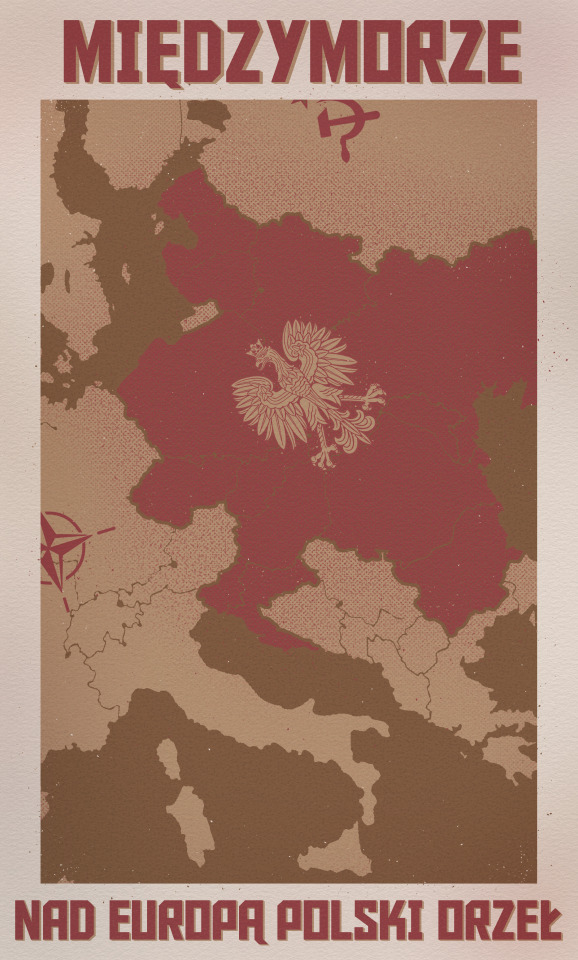
Intermarium (Międzymorze), a vision bold and bright, A tapestry woven of nations' shared plight. From Baltic shores to Carpathian peaks, Bound by hope, where unity speaks.
But alas, this dream, so fragile, so frail, Met its end, caught in fate's merciless gale. Echoes of unity now fade into the night.
But dreams of freedom never fade
0 notes